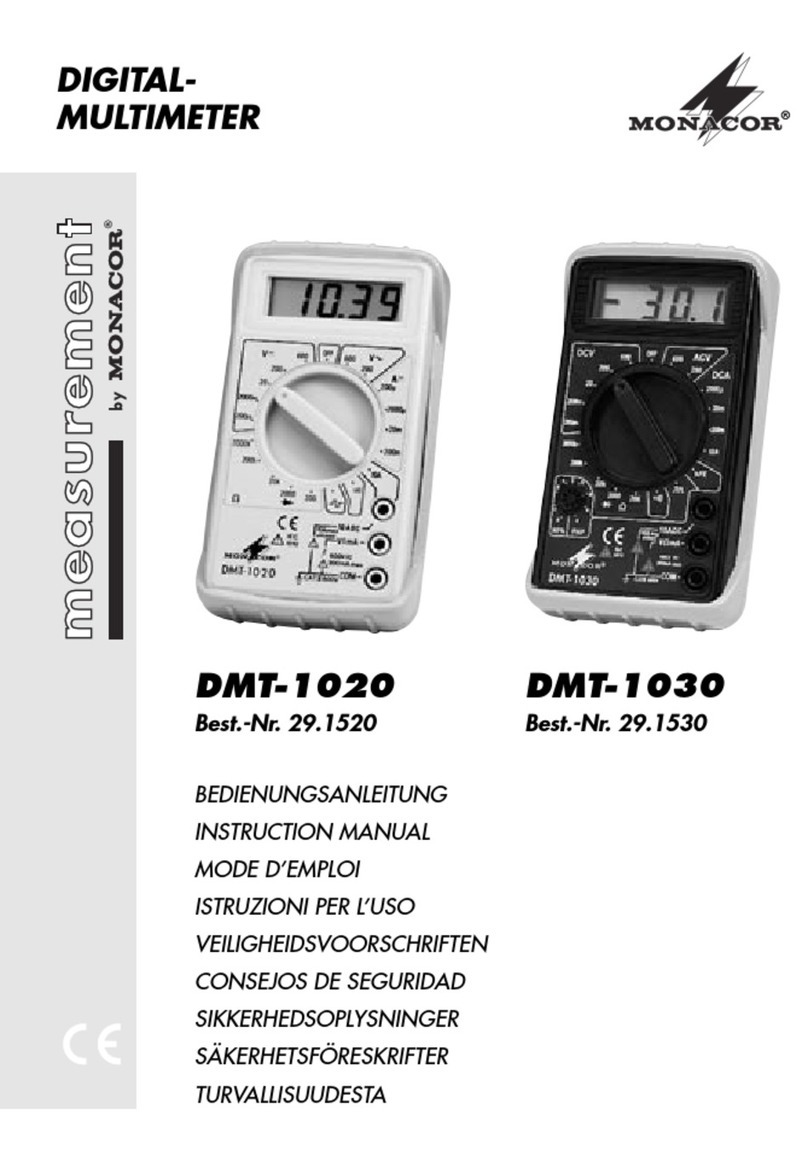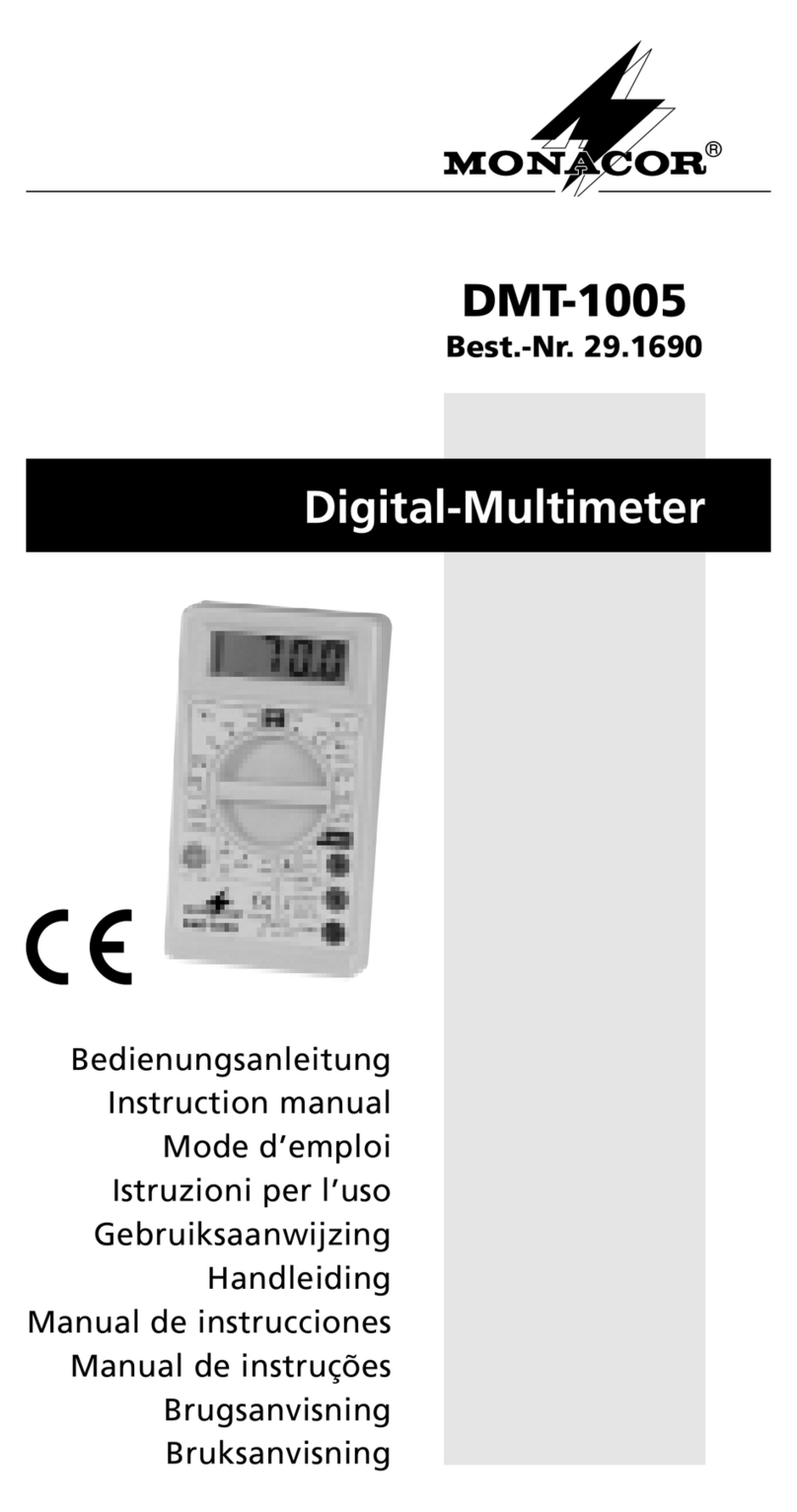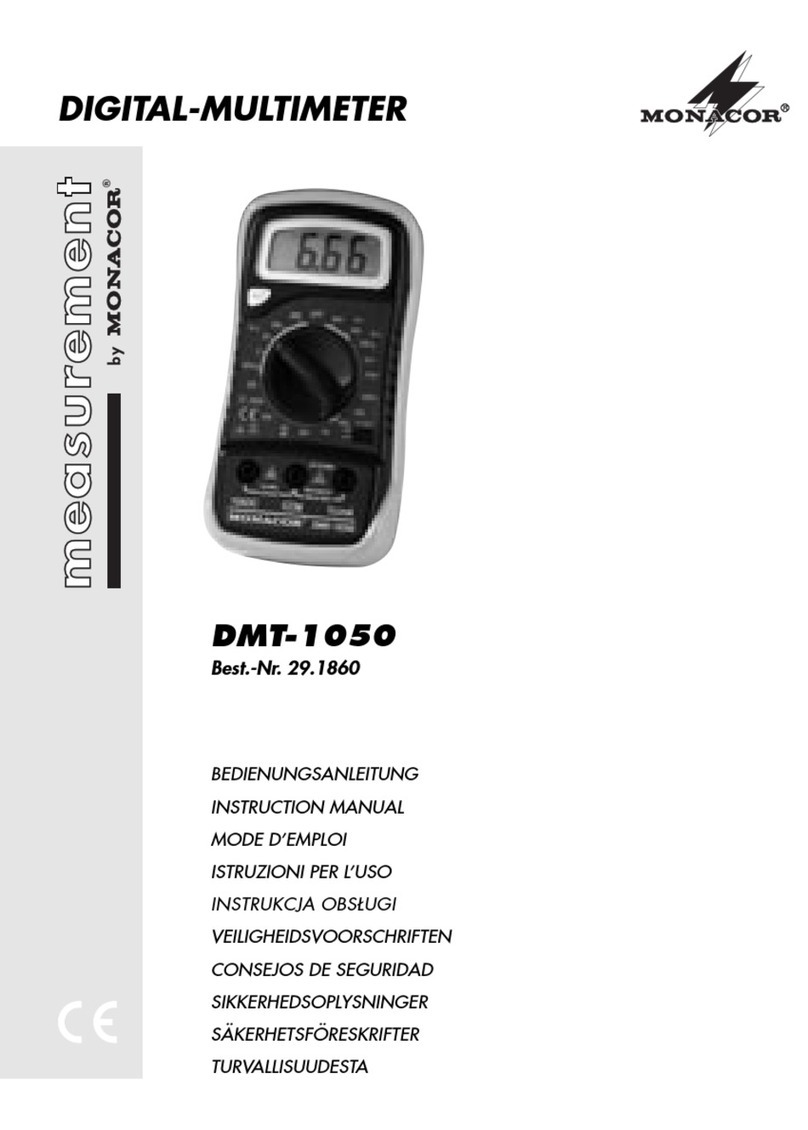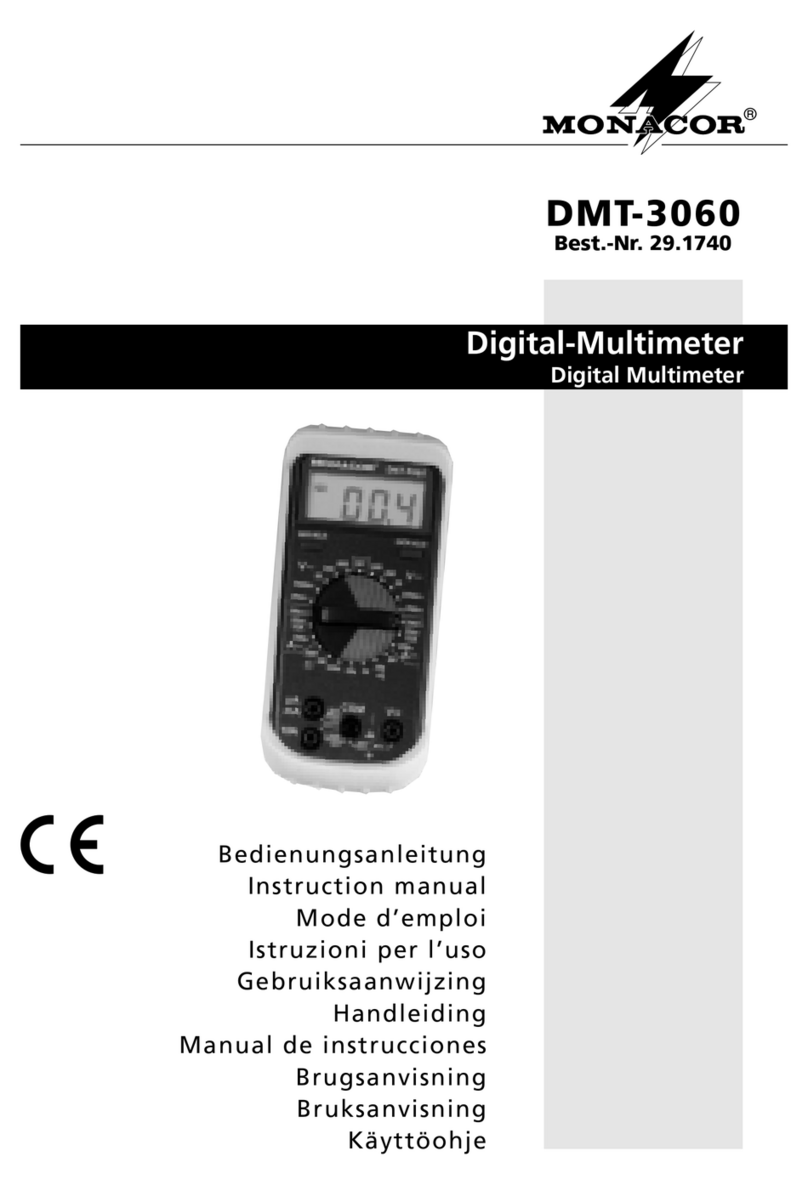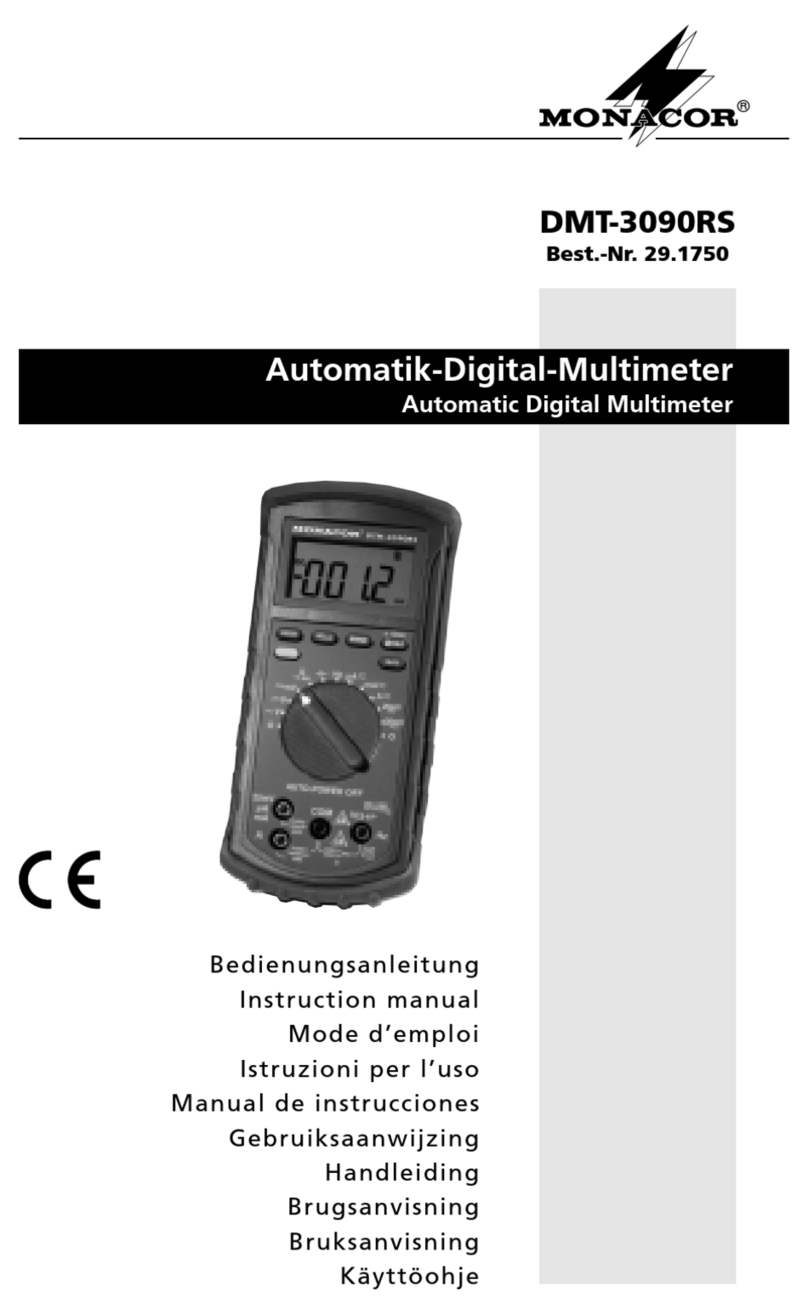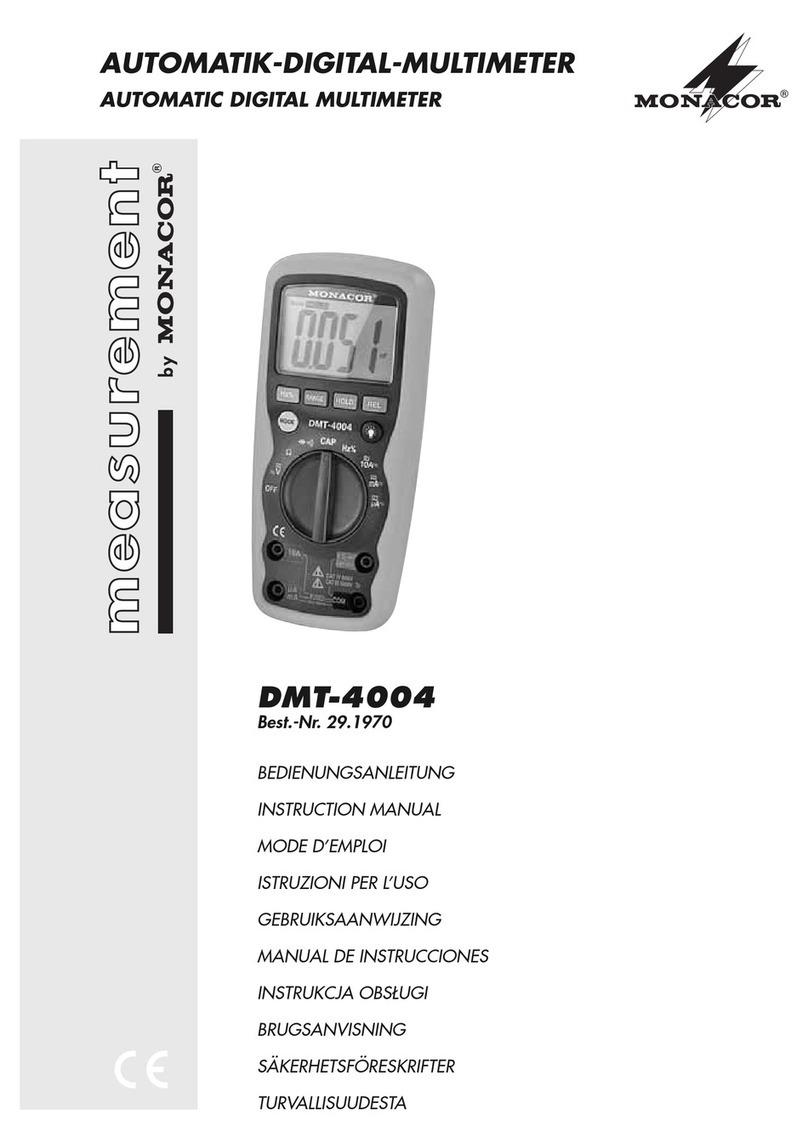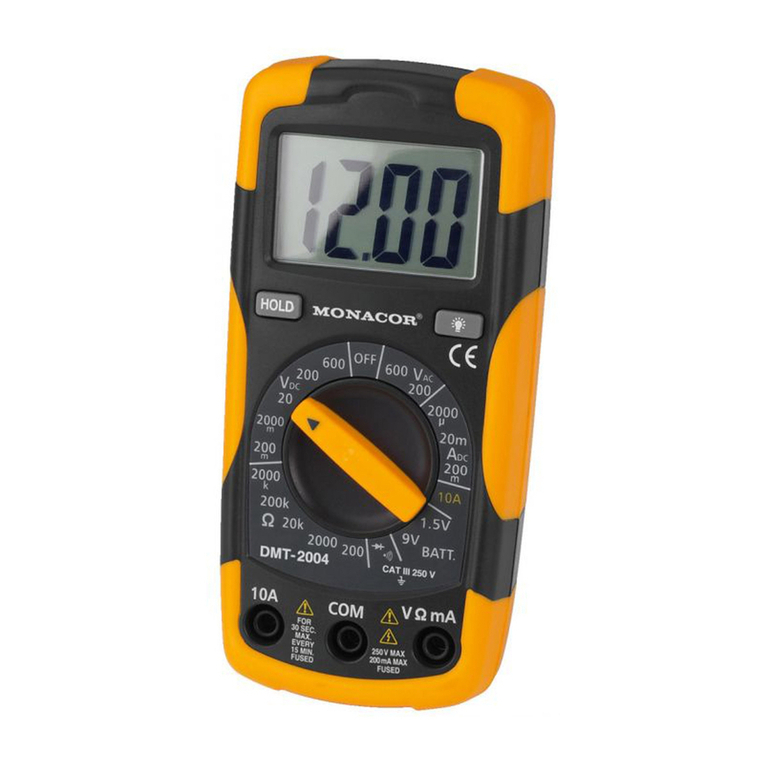gerer Ton). Zum erneuten Einschalten eine
Taste oder den Schalter betätigen.
Wird das Gerät länger nicht gebraucht,
sollte die Batterie herausgenommen werden.
So werden bei einem Auslaufen der Batterie
mögliche Schäden am Gerät vermieden.
5.1 Messleitungen anschließen
Dem Instrument liegen zwei Messleitungen
(rot und schwarz) bei. Mit ihnen können alle
Messungen außer Temperaturmessungen
(siehe dazu Kap. 6.8) durchgeführt werden:
1. Die Buchse „COM“ (12) ist für alle Messun-
gen die gemeinsame (
-
) Buchse. Die
schwarze Messleitung hier anschließen.
2. Die Buchse „V Hz Ω CAP °C °F“ (11) ist für
alle Messungen die gemeinsame (+) Buch-
se, außer bei Strommessungen. Die rote
Messleitung hier anschließen.
3. Für Strommessungen bis 400 mA die rote
Messleitung in die Buchse „µA/mA“ (5) ste-
cken.
4. Für Strommessungen zwischen 400 mA
und 10 A muss die rote Messleitung in die
Buchse „10A“ (4) umgesteckt werden.
Zum Messen die Schutzkappen von den Mess-
spitzen entfernen und nach dem Gebrauch
wieder aufsetzen.
WICHTIG! Damit das Messgerät nach IP 67
geschützt ist, die beiliegenden Abdeckhülsen
(13) in die beiden nicht angeschlossenen roten
Messbuchsen stecken (z. B. bei Außenbetrieb
zum Schutz gegen Feuchtigkeit).
6 Messungen durchführen
Vorsicht: Entfernen Sie vor dem Umschalten
auf eine andere Messfunktion immer die Mess-
spitzen vom Messobjekt, sonst kann das
Messgerät beschädigt werden!
6.1 Spannungsmessung
Vorsicht: Die rote Messleitung muss an der
Buchse „V Hz Ω CAP °C °F“ (11) angeschlos-
sen sein. Steckt sie in der Buchse „10A“ (4)
oder „µA/mA“ (5), können das Messgerät und
das Messobjekt beschädigt werden!
1) Den Schalter (10) in die Position „V “ dre-
hen. Der Modus „Gleichspannungsmes-
sung“ ist aktiviert („DC“ im Display).
2) Für Wechselspannungsmessungen die Tas-
te „MODE“ (3) drücken („AC“ im Display).
Mit der Taste „MODE“ lässt sich auch wieder
auf „DC“ zurückschalten.
3) Die Messspitzen an das Messobjekt halten
und auf dem Display den Wert ablesen.
Liegt bei Gleichspannungsmessungen an
der roten Messspitze der Minuspol und an
der schwarzen der Pluspol, erscheint im Dis-
play vor dem Messwert ein Minuszeichen.
6.2 Strommessung
Der zu messende Strom darf 10 A nicht
überschreiten!
1) Für Messungen bis 400 mA die rote Mess-
leitung an die Buchse „µA/mA“ (5) anschlie-
ßen und für Messungen bis 10 A an die
Buchse „10A“ (4). Bei unbekannten Strö-
men die Messung vorsichtshalber mit dem
10-A-Bereich beginnen.
2) Den Schalter (10) je nach Stromstärke in die
folgende Position drehen:
bis 4000 µA Position „µA“
> 4000 µA bis 400 mA Position „mA “
> 400 mA bis 10 A Position „10A “
Der Modus „Gleichstrommessung“ ist akti-
viert („DC“ im Display).
WARNUNG Messungen in Stromkreisen, an
denen über 42 V anliegen, dürfen
nur von Personen durchgeführt
werden, die Berührungsgefahren
erkennen und entsprechende
Sicherheitsvorkehrungen treffen
können. Vermeiden Sie es, bei
Messungen mit Berührungs-
gefahr allein zu arbeiten. Bitten
Sie eine zweite Person dazu.
WARNUNG Rechnen Sie mit unvorhergese-
henen Spannungen an Messob-
jekten. Kondensatoren können
z. B. auch bei ausgeschalteter
Spannungsquelle gefährlich ge-
laden sein.
Mit diesem Gerät dürfen Sie keine Mes-
sungen in Stromkreisen mit Korona-Entla-
dungen (Hochspannung) durchführen.
Lebensgefahr!
Die maximal zu messende Spannung darf
1000 V¿/~ nicht überscheiten. Anderen-
falls besteht Lebensgefahr!
D
A
CH
6

